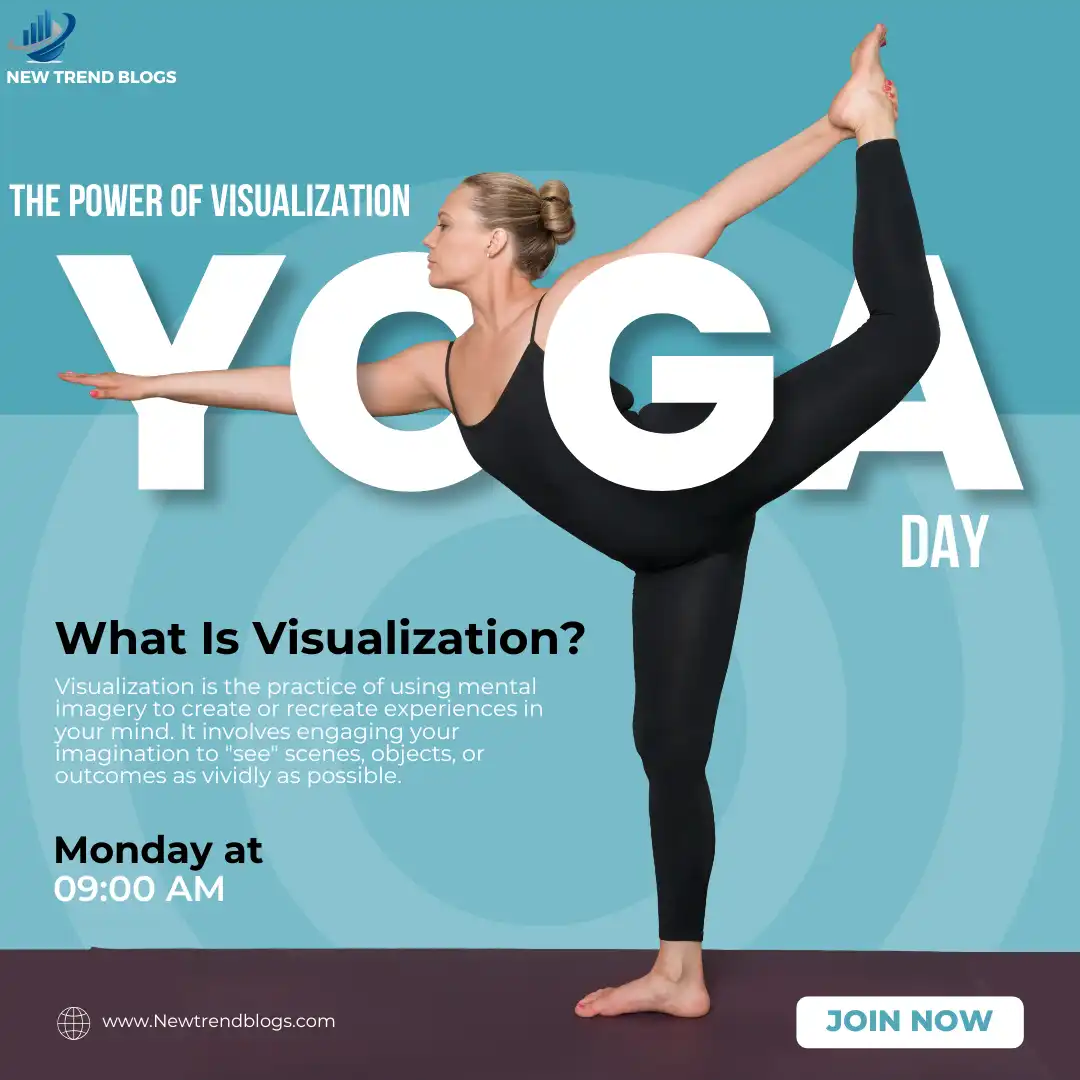The Power of Visualization: Enhancing Your Meditation Practice
Meditation has long been celebrated for its ability to calm the mind, reduce stress, and improve overall well-being. However, for many practitioners, achieving deeper states of focus and clarity can be challenging. This is where the power of visualization comes in. By integrating visualization techniques into your meditation practice, you can unlock new levels of mental clarity, and emotional resilience, and even manifest your desired outcomes. In this article, we explore the transformative power of visualization and provide practical steps to incorporate it into your meditation routine.
What Is Visualization?
Visualization is the practice of using mental imagery to create or recreate experiences in your mind. It involves engaging your imagination to “see” scenes, objects, or outcomes as vividly as possible. Athletes, performers, and even entrepreneurs have used visualization to achieve their goals, but its integration into meditation offers unique benefits. When combined, visualization and meditation create a powerful synergy that enhances focus, creativity, and emotional balance.
Why Visualization Works
The effectiveness of visualization lies in its impact on the brain. Research shows that the brain does not differentiate strongly between a vividly imagined experience and a real one. For example, when you visualize yourself succeeding at a task, your brain activates the same neural pathways that would be engaged if you were actually performing the task. This process can:
- Strengthen Neural Connections: Visualization reinforces neural pathways associated with positive habits and outcomes.
- Enhance Emotional Regulation: By imagining calm and serene scenarios, you can train your brain to respond to stress more effectively.
- Boost Confidence: Seeing yourself achieve goals in your mind can increase your belief in your abilities.
- Support Goal Achievement: Visualization aligns your subconscious mind with your conscious goals, making it easier to take aligned actions.
The Benefits of Visualization in Meditation
Adding visualization to your meditation practice amplifies its benefits. Here are some ways it can elevate your experience:
- Deepens Focus: Imagining a specific scene or outcome helps anchor your attention, reducing distractions.
- Enhances Relaxation: Visualizing tranquil settings, such as a peaceful beach or lush forest, promotes relaxation and reduces anxiety.
- Improves Manifestation: By visualizing your goals during meditation, you align your energy and focus with your desired outcomes.
- Strengthens Emotional Resilience: Imagining positive scenarios can help you process and release negative emotions, fostering a greater sense of well-being.
- Promotes Creativity: Visualization stimulates the creative centers of the brain, opening up new perspectives and ideas.
How to Incorporate Visualization into Your Meditation Practice
Ready to take your meditation to the next level? Follow these steps to seamlessly integrate visualization techniques:
1. Set a Clear Intention
Before you begin, decide what you want to achieve through visualization. Are you looking to manifest a specific goal, cultivate a sense of peace, or enhance your focus? Setting a clear intention helps direct your mental energy effectively.
2. Create a Calm Environment
Choose a quiet, comfortable space for your practice. Dim the lights, light a candle, or play soothing music to set the mood. A serene environment enhances your ability to concentrate and visualize vividly.
3. Relax Your Body and Mind
Start with a few minutes of deep breathing to calm your nervous system. Focus on each inhale and exhale, allowing tension to melt away. This prepares your mind for visualization.
4. Engage All Your Senses
When visualizing, try to engage as many senses as possible. For example, if you’re imagining a peaceful meadow, picture the vibrant colors of the flowers, hear the gentle rustling of leaves, feel the warmth of the sun on your skin, and even imagine the scent of blooming flowers. The more sensory details you include, the more vivid and effective your visualization will be.
5. Use Guided Visualizations
If you’re new to visualization, guided meditation can be a helpful starting point. These are available through apps, websites, and YouTube channels. A guide can walk you through specific imagery, making it easier to focus.
6. Focus on Positive Emotions
Visualization is most effective when paired with positive emotions. Imagine how you would feel if your visualization became a reality. Cultivate feelings of joy, gratitude, and excitement to amplify the impact.
7. Practice Regularly
Consistency is key. Dedicate time each day to your visualization meditation practice. Even 10-15 minutes can yield significant benefits over time.
Examples of Visualization Techniques
1. The Vision Board Meditation
Visualize your goals as if they were displayed on a vision board. Picture each goal vividly and imagine yourself achieving it. For example, if your goal is to travel, imagine yourself on a plane, exploring new places, and enjoying the journey.
2. The Healing Light Technique
Imagine a warm, healing light enveloping your body. Visualize it starting at the top of your head and slowly moving down to your toes, washing away stress, pain, or negative energy.
3. The Safe Space Visualization
Create a mental “safe space” where you can retreat whenever you feel stressed or overwhelmed. This could be a cozy cabin, a serene garden, or any place that makes you feel secure and relaxed.
4. The Future Self Visualization
Picture yourself five or ten years from now, living your ideal life. Visualize the details—where you live, what you do, how you feel. This technique helps align your present actions with your long-term goals.
Overcoming Common Challenges
While visualization is a powerful tool, some people may face challenges when starting out. Here’s how to address them:
- Difficulty Focusing: If your mind wanders, gently bring it back to your visualization. Over time, your focus will improve.
- Struggling with Vivid Imagery: Start with simple scenes and build complexity gradually. Practice makes perfect.
- Negative Thoughts Intruding: Acknowledge these thoughts without judgment and redirect your attention to positive imagery.
Scientific Evidence Supporting Visualization
Numerous studies back the benefits of visualization. For instance, research in neuroplasticity shows that mental rehearsal (a form of visualization) strengthens neural pathways. Athletes who visualize their performance often achieve better outcomes than those who rely solely on physical practice. Similarly, studies in psychology have found that visualization can reduce anxiety, improve mood, and enhance motivation.
Integrating Visualization with Other Practices
You can combine visualization with other mindfulness and self-improvement practices, such as:
- Yoga: Visualize energy flowing through your body as you move through poses.
- Journaling: Write down your visualizations to reinforce them.
- Affirmations: Pair affirmations with visual imagery for a more profound impact.
Final Thoughts
Visualization is a transformative tool that can enhance your meditation practice and help you achieve your goals. By engaging your imagination and focusing on positive outcomes, you can create a powerful synergy between your mind, body, and spirit. Whether you’re a seasoned meditator or just beginning your journey, incorporating visualization techniques can elevate your practice and bring you closer to the life you desire.
Start today by setting aside a few minutes to visualize your goals and dreams. With patience and consistency, you’ll discover the immense potential of your mind and the profound impact it can have on your life. Embrace the power of visualization, and watch your meditation practice transform in ways you never thought possible. See More New Trend Blogs











